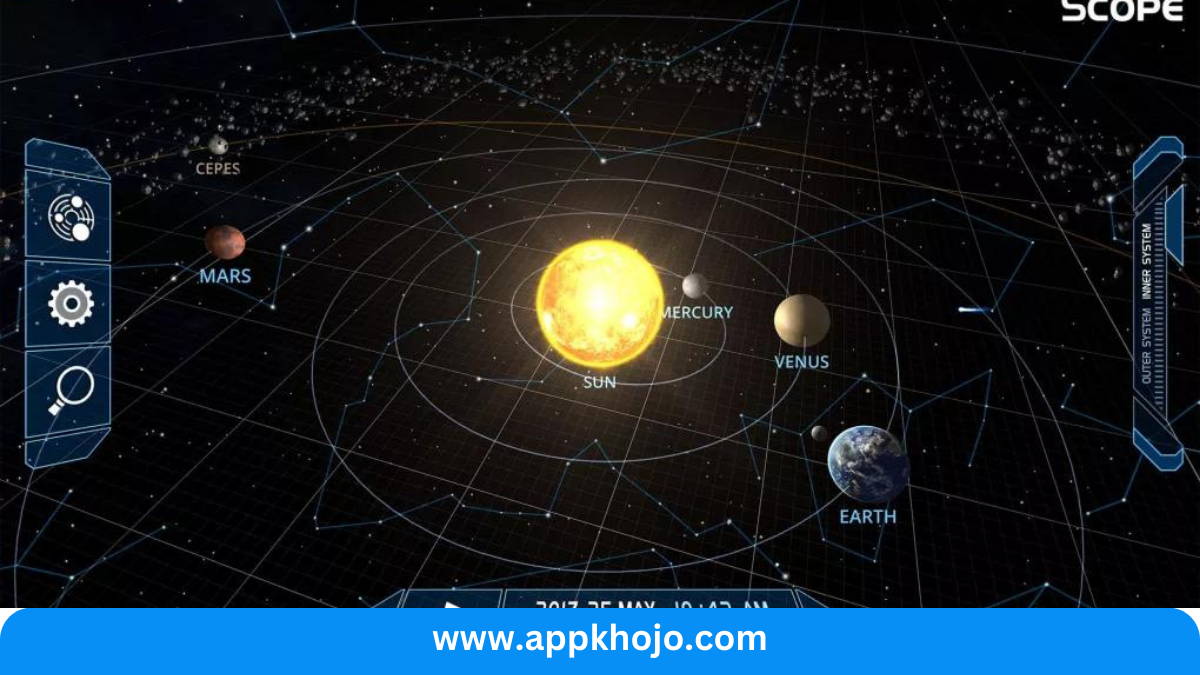Are you ready to embark on an awe-inspiring voyage through the universe right from the palm of your hand? Look no further than the Solar System Scope app, a remarkable tool that brings the wonders of our cosmic neighborhood to life. Whether you’re an avid space enthusiast, an inquisitive student, or just someone with a curiosity about the universe, this app is a window to the stars.
Solar System Scope offers a comprehensive and visually stunning way to explore our solar system and beyond. With interactive 3D models, detailed information about planets, moons, and celestial phenomena, and a user-friendly interface, it provides an educational and captivating experience for users of all ages. In this app review, we’ll delve into its key features, the educational value it offers, and the visual splendors that await those who embark on this celestial journey. Join us as we navigate the cosmos and unlock the secrets of the Solar System Scope app.
Solar System Scope is an interactive 3D model and visualization tool that provides users with an immersive and educational experience of our solar system. It allows users to explore and learn about the planets, moons, asteroids, and other celestial objects in our solar system. Here are some key features and information about Solar System Scope:
Table of Contents
Key Features
1. Interactive 3D Models:
- The app’s interactive 3D models are at the core of its educational value. Users can not only view celestial bodies but also manipulate them. This means you can rotate planets to see their entire surface, zoom in for a closer look, and explore moons and asteroids from all angles. The level of detail in these models is truly impressive, allowing you to appreciate the topography of planets, the scars on the Moon’s surface, and the intricate structure of Saturn’s rings.
- Analysis: Interactive 3D models turn learning into an engaging experience. It’s not just about reading facts; it’s about visualizing and comprehending the complex geometries and landscapes of our solar system. This feature is particularly beneficial for students, as it helps them grasp spatial relationships, scale, and planetary features more effectively.
2. Real-Time Planet Position Tracking:
- Solar System Scope offers real-time tracking of planet positions. You can see where each planet is located in its orbit at any given moment. This feature is valuable for understanding the constantly changing configurations of our solar system.
- Analysis: The real-time tracking feature provides a dynamic learning experience. Users can witness how planets move along their orbits and the relative positions of planets at any time. This is instrumental in comprehending concepts like opposition and conjunction, and it instills a sense of the solar system’s perpetual motion.
3. Comprehensive Information and Descriptions:
- Each celestial object in the app comes with a wealth of information, including data on its size, composition, distance from the Sun, and more. This information is not limited to just planets and moons; it extends to asteroids, comets, and even artificial satellites.
- Analysis: The comprehensive information enriches the educational aspect of the app. It acts as an accessible reference, eliminating the need to consult multiple sources. Whether you’re studying for an astronomy class or simply curious, having detailed descriptions at your fingertips enhances your understanding of celestial objects.
4. Solar and Lunar Eclipses Simulation:
- Solar System Scope enables users to simulate solar and lunar eclipses, visually illustrating the alignment of the Sun, Earth, and Moon during these events.
- Analysis: This feature goes beyond theory and words; it provides a visual experience of eclipse mechanics. Users can witness the precise positions of celestial bodies during eclipses, enhancing their understanding of these captivating phenomena.
5. Satellite and Spacecraft Tracking:
- Tracking artificial satellites and space probes, including the ISS, is an interactive feature. Users can see when these objects will pass over their specific location.
- Analysis: Satellite tracking makes space exploration personal. It allows users to connect with ongoing space missions and view the International Space Station as it passes overhead. This feature is a fantastic way to bring space exploration closer to the average user.
6. Dynamic Exploration Mode:
- The dynamic exploration mode provides a guided tour of the solar system with voice narration. Users can embark on a virtual journey through the cosmos, visiting planets, moons, and other celestial wonders.
- Analysis: This feature is like having a personal planetarium in your pocket. It adds an element of entertainment to education. Users can sit back and enjoy a narrated tour of the solar system’s highlights, making astronomy accessible and captivating.
In summary, the Solar System Scope app offers a comprehensive and visually engaging platform for learning about our solar system and beyond. Its 3D models, real-time tracking, detailed information, eclipse simulations, satellite tracking, and dynamic exploration mode combine to create a rich and interactive educational tool suitable for users of all ages and levels of astronomical interest.
How To Use Solar System Scope
Using the Solar System Scope app is a straightforward and engaging experience. Here’s how to make the most of its features:
- Installation and Launch:
- Download and install the Solar System Scope app from your device’s app store.
- Launch the app by tapping on its icon.
- Exploring the Solar System:
- Upon opening the app, you’ll be greeted with a 3D model of the solar system.
- To interact with the 3D model, swipe your finger across the screen to rotate the view. You can pinch or spread your fingers to zoom in or out for a closer look.
- Tapping on a specific planet or celestial object selects it, providing more information about that object.
- Real-Time Tracking:
- To track the real-time positions of planets, simply swipe or scroll to the real-time tracking section.
- Here, you can see where each planet is in its orbit at the current moment.
- Detailed Information:
- To access detailed information about a specific celestial object, select the object by tapping on it.
- You’ll find a wealth of data, including its size, composition, distance from the Sun, and more.
- Eclipse Simulations:
- To simulate solar and lunar eclipses, navigate to the eclipse section in the app.
- Choose the type of eclipse you’d like to simulate and follow the on-screen instructions.
- Satellite and Spacecraft Tracking:
- For tracking artificial satellites and space probes like the ISS, go to the satellite tracking section.
- You can see when these objects will pass overhead from your location.
- Dynamic Exploration Mode:
- Enjoy a narrated journey through the solar system in the dynamic exploration mode.
- This mode provides a guided tour of the celestial wonders, complete with voice narration. Sit back and explore the cosmos with ease.
- Customization and Settings:
- Explore the app’s settings and customization options, such as adjusting the date and time for real-time tracking, changing the app’s appearance, or setting preferences.
- Educational Use:
- Solar System Scope is an excellent tool for students and educators. Use it to illustrate and visualize astronomical concepts in the classroom or for personal study.
- Stay Updated:
- Keep the app updated to access the latest features, improvements, and any new celestial events or missions.
The Solar System Scope app is designed to be user-friendly and educational, providing a captivating way to learn about our solar system and the universe. Whether you’re interested in casual exploration or in-depth study, this app has something to offer for everyone.
Also, check iPhone
Pros
- Educational
- Interactive
- Informative
- Engaging
- Visual
- Accessible
- Real-time
- Detailed
- Inspirational
- User-friendly
Cons
- Data-intensive
- Limited depth
- In-app purchases
- System requirements
- Offline use
- Updates
- Advertising
- Device storage
- Language options
- Minor bugs
1. What is Solar System Scope?
Solar System Scope is an interactive 3D model and educational tool that provides users with a real-time, 3D visualization of our solar system. It allows users to explore and learn about celestial objects such as planets, moons, and asteroids.
2. Is the app free to use?
The app offers both free and premium versions. The free version provides basic features and access to the 3D model, while the premium version offers additional content and customization options.
3. How can I access Solar System Scope?
The app is accessible as a web-based application that you can use through your web browser on various devices with an internet connection. Additionally, there are mobile apps available for iOS and Android devices.
4. What can I do with Solar System Scope?
You can explore our solar system in 3D, view celestial objects from different angles, access information about planets and other objects, learn about upcoming celestial events, and customize your viewing experience.
5. Is Solar System Scope suitable for educational purposes?
Yes, it is commonly used as an educational resource in schools and by students and teachers. It provides detailed information about the solar system and its objects, making it a valuable tool for astronomy education.

